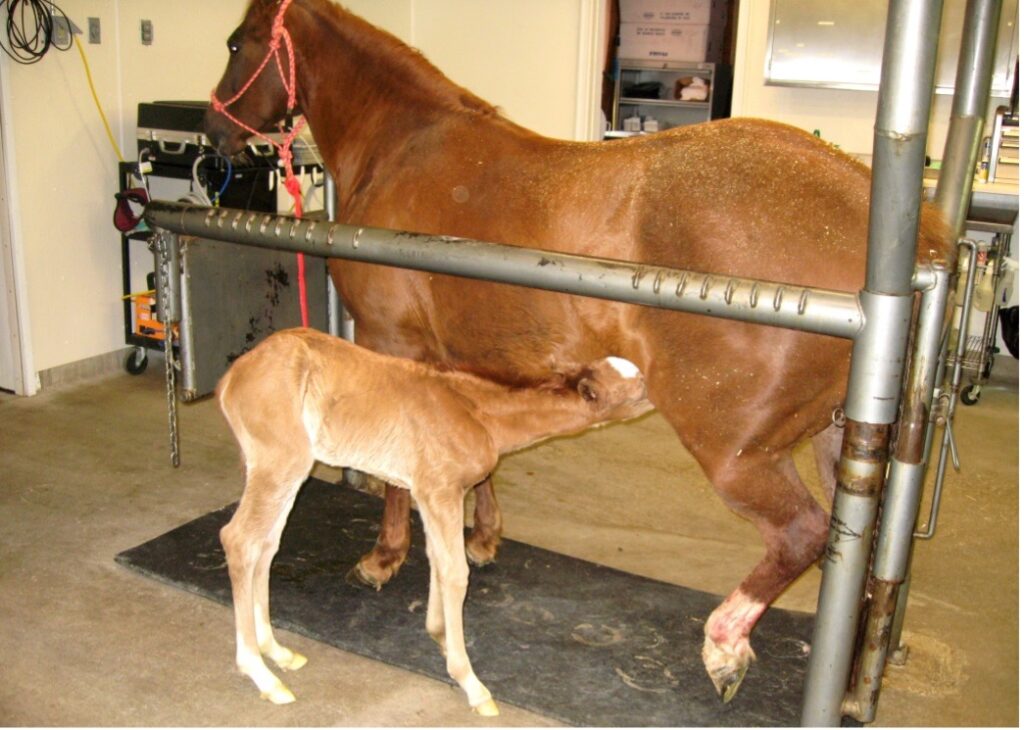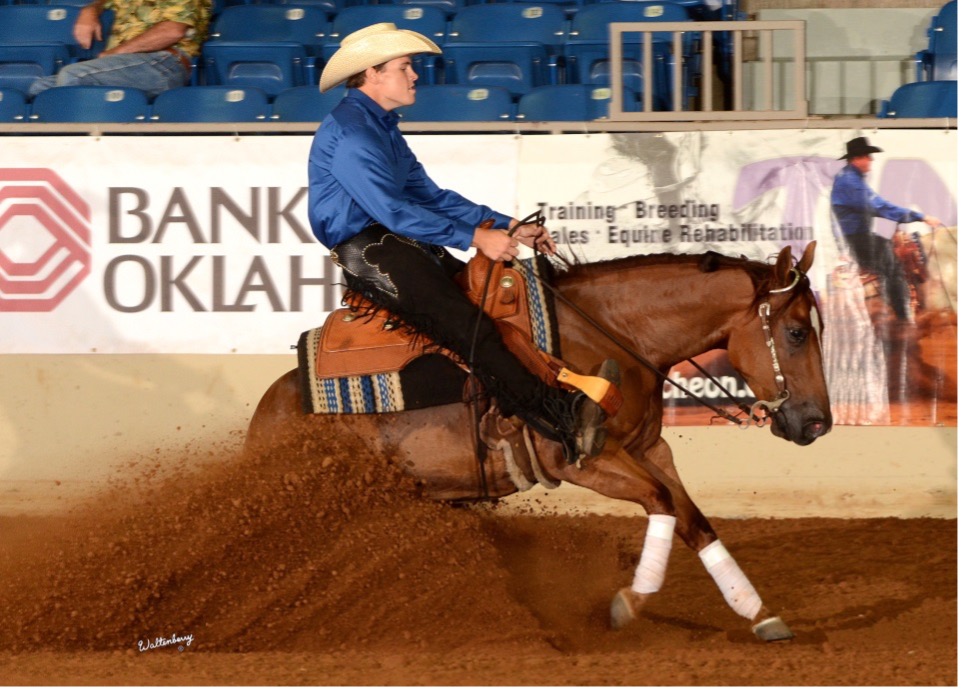Mare carried for 385 days.

The maiden sorrel Quarter Horse mare was bred on February 13. The owners anticipated a routine pregnancy and calculated the mare’s due date as January 19 of the following year based on an average gestation length of 340 days.
The owners were nervous about her projected due date because they would be out of town for a few days in mid-January. However, January rolled around, and the mare did not bag up. Nor did she bag up significantly through most of February. Now, the owners were concerned about their “overdue” mare giving birth to a large mega-foal.
Finally, the mare gave birth on March 5 after carrying her foal for 385 days. The newborn colt weighed only 60 pounds and, in the owners’ words, “looked like a wet rat.”
The mare had leaked colostrum in the hours prior to foaling, so the little guy had to be supplemented with frozen-thawed colostrum from a colostrum bank at the local veterinary clinic. Radiographs of the colt’s legs were taken, and the joints were determined to be normally developed, which is not always the case with dysmature foals.
Several discussions were held around the foaling stall, and the consensus on the delivery day was that the foal wouldn’t amount to much. They were all wrong.
The tiny foal eventually developed into a robust athletic reining horse. He is now a 4-year-old gelding and won his first two reining events.
Mares that carry longer than the standard gestation length typically have a normal-sized or smaller-than-normal foal. In contrast, cows or heifers that experience a prolonged gestation may give birth to an overly large calf and have difficulty during the calving process.

In the present case, the factors that controlled in utero development and maturation didn’t happen at the same rate as with most “normal” foals. This foal needed more time inside his mom to mature enough to survive on the outside. As with every pregnancy, when this colt was sufficiently mature to survive, it sent a signal to the dam to initiate the birth process.
Owners may ask if there is a risk to the mare if she carries her pregnancy past her due date. In general, there is no risk to the mare, but there would be significant risk to the health of the as-yet-unborn foal if the pregnancy were terminated early by induction of labor. We never recommend inducing labor in a mare based solely on gestational age. In this case, induction of labor at day 340 would have resulted in the delivery of a foal 45 days earlier than nature intended, and most likely, the foal would not have survived.
Factors that are reported to cause prolonged gestation in mares include ingestion of endophyte-infested tall fescue grass (fescue toxicity), placental insufficiency, and inadequate nutrition. None of these factors were evident in the present case.
In case you were pondering about the longest equine pregnancy on record, it belongs to a Thoroughbred mare in Australia that gave birth to a live foal after 445 days of gestation. That mark makes 385 days seem not as bad after all…
The lesson to be learned from the current case is that a foal may be tiny at birth, but give ‘em a chance to grow up. Great things may happen.